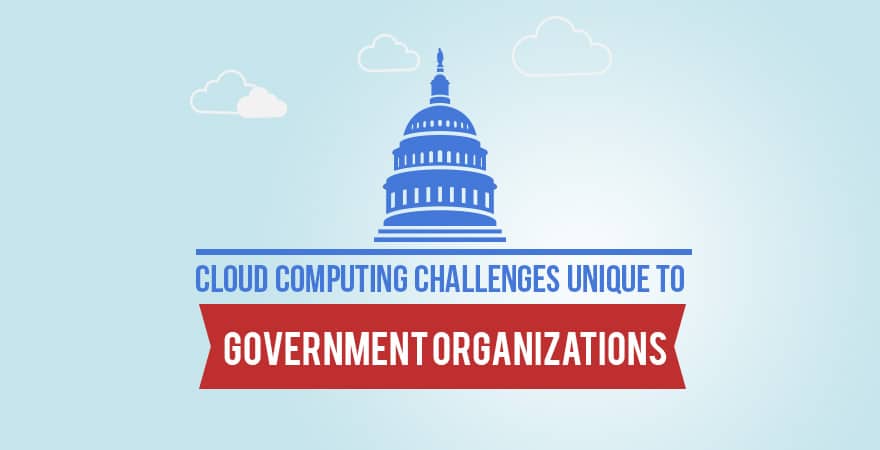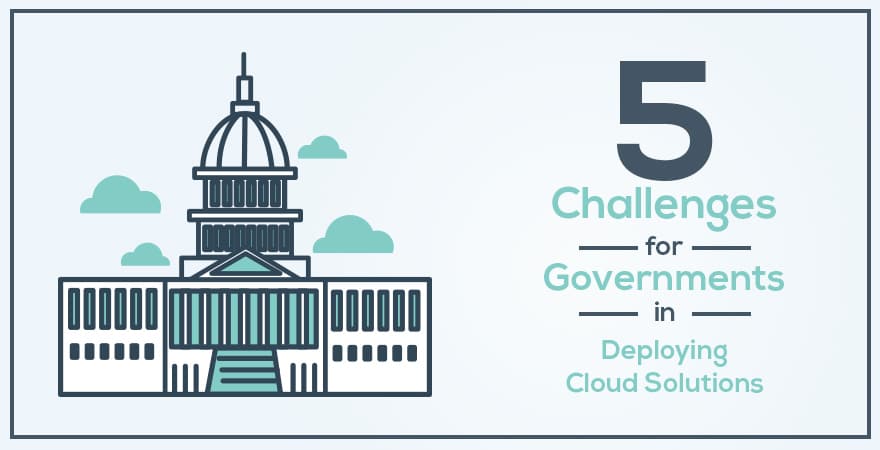The typical benefits of Cloud Solutions are compelling, not only for corporate entities but also sufficiently entice mammoth government organizations. When it comes to executing daily tasks, what ultimately matters the most is the outcome and not the means.

Also Read: 8 Reasons: Why Cloud Computing For Small Business?
It is for these very reasons that governments across the globe are seriously prospecting for secure, innovative and efficient cloud solutions. We are also witnessing a gradual shift in Cloud Service Provider’s (CSP) preference when it comes to offering their services to state organizations.
Difference between Corporate and Government Priorities
The considerations behind adopting a cloud solution are quite different for corporate entities and government organizations. A company may decide to employ a cloud solution purely as a cost cutting initiative, but a state owned concern can’t simply embrace the cloud solely for savings.
Also Read: Business Continuity vs. Disaster Recovery
Scope of Operations
Today’s large corporations may outsize many government organizations in terms of scope of operations. Generally, the stakes are much higher in case of the latter when it comes to diversity and sensitivity of the data that resides on the respective cloud solutions.
Also Read: How Advances in Cloud Computing Changing The World by 2020
The Government Citizen Contract
Each government functions smoothly by virtue of an unwritten contract with its citizens. The broad terms of this arrangement are that the state will provide certain amenities to its residents. In return, the residents have to pay certain taxes or fees for availing those niceties.
The problem arises at the point of interface between any government and its citizens. In common terms, all of these points of interface are called contact centers. The citizens of any country want this interaction to be super-efficient, brief and result oriented.
Just like any customer who expects and wants quality service in lieu of the charged sum, citizens also expect quality service from their state entity. It can be safely said that these interactions are generally marred by inefficiencies and systematic bottlenecks.
This is where the potential flexibility and efficiency of a well-orchestrated cloud solution come to light. A positive experience at any contact center translates into happy and satisfied taxpayers, which is a desired goal of all governments across the globe.
Also Read: Digital Transformation and the Future of Work
Challenges for Governments in Deploying Cloud Solutions

The prospecting, planning, execution, migration and streamlining of any cloud solution in any environment is bound to entail its unique set of challenges. However, the scope and nature of these challenges is somewhat different when it comes to government organizations.
Data Security
The data of most government entities is both vast and highly sensitive. Therefore, the primary concern for any state owned organization is security of this data. This concern is further aggravated by the general practice of most Cloud Service Providers (CSP) in which the storage is shared.
This does not imply that the data of one client will be merged or overlapped with the data of any other client of the same CSP. Still, it may act as a major deterrent from migrating to the cloud. Concerns surrounding data security are further cemented by a steady influx of top tech stories around cyber security breaches.
Also Read: Cloud Security Breaches of 2019 and the Way Forward
Pattern of Cyber Attacks
The recent news centering data breaches are quite worrisome in two respects. Firstly, the pattern of cyber-attacks is super diverse. Attackers have unleashed their malicious tools at virtually anything that has even the least interface with the internet.
Secondly, we see no respite from cyber criminals when it comes to federal or state owned organizations. The most recent example is one in which state data of 22 Texas municipalities was breached and crypto locked by the perpetrator. The attacker even demanded a whopping ransom of $2.5 MN in return.
Also Read: Cyber Security as a Catalyst for Organizational Growth In 2020
Geographic Location of Data
Establishing a data center is highly capital intensive in nature. When a Cloud Service Provider (CSP) decides to commission such an infrastructure, it forecasts future demand as well. Therefore, a CSP may not be very keen to establish a data center for a single government entity.
When CSPs plan the geographic location of their data center, they consider the most feasible location for their entire customer base. This may even mean that the data center is located beyond the physical borders of that state or government. This can also be a cause for serious concern.
The geographical displacement of a data center can give rise to jurisdictional issues. It is very simple and straight forward for a state or government to exercise its writ within its borders. The situation rapidly gets very complicated when there is a jurisdictional overlap.
Let’s consider the example of just the United States. There are a host of legislative differences even for the same issue as we move from one state to the other. State and government organizations simply cannot afford any delays in the delivery of their services.
In light of the above challenges, most government organizations may not deploy a cloud solution if the location of data centers of the Cloud Service Provider may impede the delivery of their services or pose potential legal challenges in the event of some litigation.
Also Read: TechRepublic Listed dinCloud As The Best Desktop as a Service Provider
Performance Concerns
The whole idea behind cloud based solutions is the optimal use of shared resources, whether storage or processing muscle. This very element of “shared resources” is likely to make government entities a little nervous. The work load of some such entities may get overwhelming for the cloud solution to handle.
As a result of this, either the state entity risks crashing of the whole system or annoyingly increasing the timeline for delivery of the service. Take two simple examples of utility bills and filing of tax returns. The work load for both processes varies but drastically increases as the due dates for both approach.
Therefore, the cloud solution has to be capable of handling the peak workload for the particular state entity. This runs contrary to the basic way cloud solutions are designed to function. As a result, most government organizations feel nervous and reluctant to migrate to a cloud solution.
Also Read: Who is dinCloud?
Procurement / Deployment Rules
The decision process for employing a cloud solution are way simpler for corporate entities as compared to government organizations. In a typical corporate setup, it is generally the board which gives the green signal for deploying a cloud solution.
The company’s board will take a few presentations about the estimated cost savings that the cloud solution will bring and arrive at a conclusion. It won’t involve a host of special sanctions or permissions, typically associated with state or government organizations.
Also Read: dinCloud Hosted Virtual Desktop Pricing
Government entities on the other hand do not enjoy this level of liberty in formal decision making. Such organizations are governed by a set of rules and regulations. These regulations and their typical jargon is so complicated and restrictive that most decision makers feel their hands are too tied.
Given the inherent complexity of state laws and certain cyber security concerns surrounding the cloud computing industry, selecting and deploying a cloud solution in a state organization becomes a real challenge. Someone in the helm of affairs has to leave the typical bureaucratic comfort zone and take a bold decision.
Here, the role of legislature is also very crucial. Lawmakers, at the federal and state level, should review the laws that impose illogical or unjustifiable restrictions when it comes to outsourcing government processes. In the absence of bold decision makers and relatively accommodative laws, government entities may always remain deprived of highly flexible and productive cloud solutions.
Benefits of the Cloud for Government Organizations
Now that we have covered the challenges in the path of government organizations to deploy cloud solutions, let’s discuss some compelling advantages of the cloud:-
- Government data can be centralized at a single point, making it a vast pool of valuable information.
- The state can tremendously improve the speed and reliability of the service over a cloud network.
- A lot of fixed costs related to procuring and maintaining a vast IT infrastructure can be greatly reduced.
- Keeping the seasonal trends in view, government organizations can quickly scale up or down.
- The scaling of operations can be performed in a highly cost efficient manner.
- Cloud Service Providers are constantly innovating and improving their service at no cost to the client.
- The security of data is managed by the CSP, which greatly reduces the associated costs and efforts.
- All the productivity related applications can be integrated into the cloud solution by the CSP.
Conclusion
The implementation of a cloud based solution can be a landmark decision for any government organization. It will not only streamline the process, but will also greatly improve the speed and quality of service. This will translate into a higher approval rating of any government in the eyes of its citizens.
However, government entities will have to rise above the typical bureaucratic hurdles and jargon to chalk out the possibility of deploying the relatively out of box cloud based solutions. Once the effort starts bearing fruits, it will trigger even more state organizations to shun their conservatism and embrace cloud computing.


